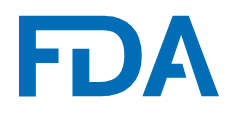On September 30, 2025, the U.S. Food and Drug Administration (FDA ) posted a Request for Public Comment regarding how to measure the performance of medical devices enabled with artificial intelligence (AI). The FDA noted that this is not a draft or final guidance, nor does it propose policy changes. The purpose is to gather early feedback from outside of the FDA.

This is another step taken by the FDA to address emerging AI technologies. This blog previously reported on guidance issued by the FDA to provide recommendations for predetermined change control plans (PCCPs) tailored to AI-enabled devices. We also previously examined recent machine learning (ML) studies in medical imaging, applying FDA principles regarding ML practice.
In the Request for Public Comment, the FDA notes that AI-enabled medical devices offer benefits for patient care but also present new challenges for ensuring ongoing safety and effectiveness after deployment. AI system performance can be influenced by data drift, which may lead to performance degradation, bias, or reduced reliability. However, the current evaluation methods are not designed to predict behavior in dynamic, real world environments. The ongoing, systematic monitoring is increasingly important to maintain safety and effectiveness throughout these devices’ lifecycle.
The FDA has provided a series of questions, for which they particularly request public input, including the following:
- Performance Metrics – to measure the safety, effectiveness, and reliability: which metrics are used, how are these metrics defined, and what timeframe is considered?
- Real-World Evaluation – to monitor the performance after deployment: what tools and methods are used, how to balance the human review and automated monitoring, and what infrastructures are implemented to support these real-world evaluations?
- Data Sources and Quality Management – what data sources are used, how to ensure data quality, completeness, and interoperability, and what methods help integrate clinical outcomes and user feedback into model updates?
- Monitoring and Response – what triggers additional assessments and how to handle the degradation?
- Human-AI Interaction – how do user patterns affect performance and what user training can help?
- Additional Considerations – what other factors or best practices are also important?
The Request has been docketed and is available at regulations.gov, via which comments and feedback may submitted by December 1, 2025, to be considered by the FDA.
Tags
Artificial Intelligence (AI), Medical Devices, Request for Public Comment, U.S. Food & Drug Administration (FDA)
